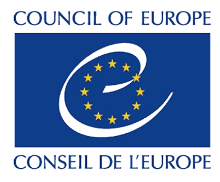Current status
Submitted
Discover more
After a contribution is submitted to BePART Forum, the initiative is marked as “Submitted”; as other partners involved in the initiative submit information from their side, the initiative is marked as “Under review” and goes through the validation process; twice a year, initiatives are validated by the BePART Working Group at the Council of Europe. Successful initiatives are marked as “Validated”. Do you want to learn more – click here
Contributor(s)
First contributor: Nässjö Municipality
Summary
Project promoting rural development through participatory budgeting in the smaller towns and villages in the municipality. Half a million Swedish kronas per town/village (roughly 50 000EUR) is used for investments. Inhabitants and citizens contribute with suggestions for investments that would improve the localities, making them more attractive and desirable to live in, moreover, they decide, through voting, what they want to do with the money allocated for their town.
Administrative level
Local, towns and villages in the municipality
Year of implementation
2016
Policy area(s)
- Other
Further details
General development of villages and towns according to the wishes and ideas of the citizens.
Sorry, no records were found. Please adjust your search criteria and try again.
Sorry, unable to load the Maps API.
Samhällsföreningar (village developmental groups and local associations)
Civil society organisation
Contact info
/
Tipology of involvement in the initiative
- Indirectly impacted by the process
Nässjö municipality
Public Authority
Contact info
/
Tipology of involvement in the initiative
- Initiating (i.e., advocating for and starting the process)
Level of Participation
- Information
- Consultation
- Dialogue
- Partnership
Discover more
By level of participation we refer to the type of involvement in the decision-making process. The levels are identified by the intensity of participation: going from “information” to “consultation” to ” dialogue” to “partnership”. Do you want to learn more – click here
Developed practice(s)
Direct influence and dialog on the decisions of investments as well as helping in shaping the suggestions and sometimes supporting the management when projects are implmented.
Step(s) of the political decision-making process at which the practice was implemented
- Inputs/Incentive ideas for policy
- Implementation of policy
Discover more
There are six different steps of the political decision-making process: agenda setting, drafting of policy, decision-making, implementation of policy, monitoring and reformulation of policy. Each step offer opportunities for CSOs and public authorities to interact. Do you want to learn more – click here
How the initiative was implemented
Situation
The association helped gathering the citizens and represented their own ideas.
Activities performed
Group meetings, meetups.
Tools and mechanisms applied
Meetings, online forms, visits.
Goals of the civil participation initiative
At community level
Higher level of local ownership as well as better investments given the local citizens influences and choices.
From Civil society organisation’s perspective
Better investments, wise use of funds.
From Public Authority’s Perspective
Better investments, wise use of funds, larger understanding for local conditions.
Results expected prior to the implementation
Better understanding and investments made (all)
Immediate results achieved after implementation
Better understanding and investments made (all)
Long-term impact
Better contact and understanding of each other’s situations
Practice lessons learnt (obstacles and solutions)
| Agency (i.e., political conditions/power structures) | Obstacles | Politicians were initially sceptical to the concept. |
| Solutions | Discussions and communication. | |
| Legislative | Obstacles | Procurement laws and regulations delay certain things as well as rules changing during the project. |
| Solutions | Communication about delays and changes to the citizens. | |
| Administrative | Obstacles | Managing different parts of the municipal organization prioritizing the project differently. |
| Solutions | Multiple meetings as well as revaluations and changing way of working. | |
| Socio-cultural | Obstacles | Different parts of the municipal organisations have different budgets and relationship with the citizens. |
| Solutions | Trying out ways that work over the course of the project and leaving the contacts outwards to certain people in the organization. | |
| Economic | Obstacles | Limited budget for maintenance. |
| Solutions | Local associations carrying out some of the maintenance to qualify some of the suggestions. | |
| Human capital | Obstacles | Being a more technical organisation with less experience in designing and communication. |
| Solutions | Learning throughout the project, eventually adding new expertise to the group. | |
| Other | Obstacles | / |
| Solutions | / |
Further information
/
Self-assessment
The self-assessment presents the opinion of the contributor about on what extent the following principles for Civil Participation have been reflected in the implementation of the initiative/practice/case-study, ranging from 1 (min) to 4 (max) (N/A: not applicable, do not know)
| Openness | 4 |
| Explanation | One of the main aspects of the project has been to learn together and be humble as well as creating new contacts between the citizens and the officers. |
| Trust | 4 |
| Explanation | Through the project many other aspects have been highlighted and fixed because of the contacts and interactions as well as the local presence of officers. Communication about the project, intention, progress, etc., have been prioritized and appreciated. |
| Independence | N/A |
| Explanation | The associations are primarily functioning as communication channels and mobilization of the towns and villages. |
| Participation | 4 |
| Explanation | The associations can participate in the same way as all other citizens and are highly encouraged to use their channels and contacts to gather ideas and support further discussions. |
| Transparency | 3 |
| Explanation | Great efforts have been made to communicate about the progress of the project as well as regular evaluations to make sure we can make changes. Further information of the progress was desired, and we will keep working on the communication. |
| Accessibility | 4 |
| Explanation | Folders, letters, posters, and webpages are designed to be easily accessible for everyone. |
| Non-discrimination | 4 |
| Explanation | Information is sent to all and there are multiple ways of participating as well as possibility to be anonymous so that everyone would feel comfortable in participating. |
| Inclusiveness | 4 |
| Explanation | All households got information and we have made special information campaigns for the groups that are harder to reach. |
| Accountability | 4 |
| Explanation | Continuous evaluations where the citizens are given the possibility to express what has worked well and what needs to be improved. Possibility to contact the municipality for further information when needed. All documents are available to the public by law. |
Thank you for wanting to share your experience on the BePART platform!
Learn more about the submission process, or just fill the form below.



